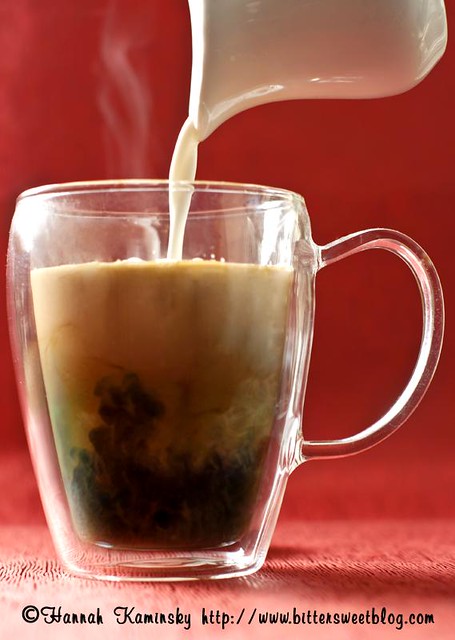This is part of a series in which I gave half-assed advice on product photography. Part one was about brightening your photos, while part two was about getting rid of the background clutter.
Before I jump into talking about photos, I have an announcement to make. My dear
grandma has caught Etsy fever. As you may remember, she is the one who taught me how to crochet back in 2005. Well, now you can check out her own mad skillz at
Hermits of Afton! However, because she has no interest in the marketing and selling side of the craft business, her shop is being run by yours truly. Because of this, I get to have more fun with the product photography (not that shooting hat after hat after hat isn't thrilling...but it is nice to work with other types of products). And that is what has inspired today's post.
In the post about background clutter, I mentioned how you should "control your environment". Basically, make sure whatever is in the photo is intentional and remove anything that doesn't belong. Creating an illusion is similar in that you are controlling the shot, but in this case, you are also showing a product in action. Is that vague enough for you? Here are some examples--using
products by Hermits of Afton, of course.
This pair of adorable monkey slippers should sell themselves, all by themselves, right?
Sure, a detail shot of the product is really nice. But a second shot showing how the product can be used would be even better, don't you think? Hats being worn on heads and not just laying on the floor. Pictures hung on the wall, instead of laying on the floor. A blanket wrapped around someone, rather than laying on the floor. Okay, you got me: anything is better than just laying your product on the floor.
So, we have a pair of baby booties and should theoretically show a baby wearing it. One problem, though: I have no baby and I have no access to a baby.
Enter the illusion.
I don't have a baby, but what I do have is a little girl with skinny arms:


Now scroll back up to those earlier pictures and try to un-see that the legs are actually arms. That, my friend, is il-lus-ion.
Here's another example that also incorporates the idea of "hide the (unintentional) clutter".
For the line of dish soap covers, I wanted to create a scene of tranquility. A scene that says, "By buying these prairie dress washcloths, your kitchen will be transformed into a magical place where doing the dishes downright rocks."


The only thing in the background is a blurred plant and a sunlit window, both intentionally included in the shot. But you know what isn't included in the Etsy pictures?

All the dirty dishes I had to move to get a clean (no pun intended) shot, not to mention all of our counter debris. By purposely excluding that from the shot, I made sure the customer's focus would only be on the product and how they could use it in their own home.
(By the way, if you look closely, you may even see the dividing line of where I cleaned the sink and counter.)
Here's the last example, which incorporates
intentional clutter, creating an illusion, and maintaining a theme.
For the line of sewing products, I wanted to create a theme which was, "Look how bright and beautiful and clean your sewing workspace can be! To get this space, all you need to do is buy this scissors case!"

Now, when I said "intentional clutter," you didn't really expect
clutter, did you? A couple needles, a button, a sewing machine, strewn haphazardly as if a seamstress were caught by surprise while hard at work. Hard at work in her very bright and very clean workspace.
Again, illusion. I don't actually know anybody whose workspace is that neat. Here's mine when I'm sewing:

However, does anything in that photo appeal to the buyer in you? Probably not. And that's why we create an illusion.


Here are some wonderful examples of creating illusions and establishing themes on Etsy:
 Gray Donkey Toy Rattle by MiracleFromThreads
Gray Donkey Toy Rattle by MiracleFromThreadsForget the baby! With such a whimsical layout, wouldn't
you want to play with this?!
 Vintage Monogram Passport Wedding Invitation by BeyondDesign
Vintage Monogram Passport Wedding Invitation by BeyondDesignSince this wedding invitation is both travel- and vintage-themed, the seller maintained the theme by incorporating vintage travel items.
So, if you're confused about how to create a theme, answer these questions:
- Who (or what) will use the product? A baby? An overworked mother? A dog?
- How should they feel while using it? Pensive? Tranquil? Excited?
- Can you photograph it being used?
- Better yet, is there a way to create the illusion of it being used, while controlling your environment?
- Finally, how can you tie all of these ideas into one beautiful picture?
And lastly, here are some ideas for creating an illusion:
- Have a beach-themed item, but no beach within 500 miles? Find a sandy volleyball court or playground.
- Have an item that is designed to be used on animals...but you're allergic? Find a realistic-looking stuffed animal to use (but for the love of Rob Kalin, make sure the viewer can't tell it's a stuffed animal...stay tuned for that upcoming article)
- Have an item to be used at a wedding? Buy a $30 dress from a thrift store and stage a mock wedding, using close-up shots. Better yet, you may even have a friend who would love to relive her wedding by posing in her dress.

























































